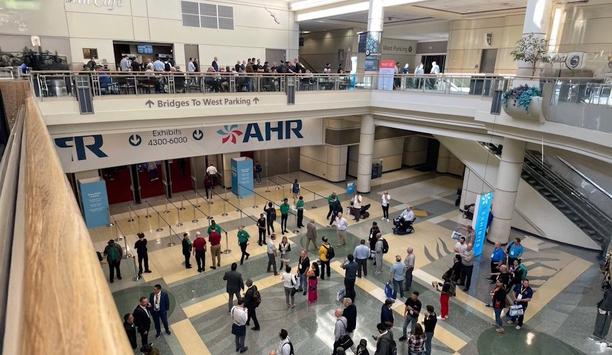Net-zero is high up on the agenda. And to achieve the UK’s carbon-neutral pledge by 2050 the country’s building stock must be decarbonized.
Embodied carbon
When we talk about decarbonizing buildings, there are two distinct categories of emissions that come into play. The first is embodied carbon. Here, the embodied carbon of a building includes emissions deriving from the construction materials, the building process, and the fixtures and fittings inside.
It also covers emissions from deconstructing and disposing of materials at the end of life. These activities account for 11% of all carbon emissions.
carbon emissions
However, the second category of carbon emissions, operational carbon, is responsible for 28% of carbon emissions. Operational carbon relates to the amount of carbon emitted during the in-use phase of a building.
Operational carbon relates to the amount of carbon emitted during the in-use phase of a building
Given that around 80% of buildings that will be standing in 2050 have already been built, all net-zero strategies must factor in making our current stock more sustainable. For example, there are 1,656,000 non-domestic buildings in England and Wales which account for around 24% of building stock emissions – if we are to reach net-zero by 2050, we simply must decarbonize the current stock of public and commercial buildings.
sustainability management system
It is vital to consider the footprint of commercial buildings, which is where our expertise lies. So, how can owners and operators of such buildings approach decarbonization? An ideal sustainability management system will help reduce energy consumption while replacing fossil fuel-based energy sources with renewable energy.
In our experience, there are four major steps to achieving these two end goals – measure, analyze, manage and improve.
Measure and analyze
Detailed analysis can identify opportunities to reduce energy consumption without compromising on comfort
The first of these (measure) very much involves getting back to basics and understanding how your building performs. It requires the capturing of data from key sources such as gas, electricity, and water meters, as well as additional submeters to gain a thorough overview of where energy is being used and potentially wasted.
Once the data has been gathered, detailed analysis can identify opportunities to reduce energy consumption without compromising on occupant comfort. There are many ways to do this, including the completion of back to basic checks by comparing consumption against building occupancy patterns, weather conditions and HVAC controls parameters. The findings can then be benchmarked against other sites in your estate and national standards.
Manage
Completion of these first two steps enables the creation of a bespoke solution to manage your building’s operational carbon output. Such strategies could incorporate a range of specific measures, including the deployment of exceptions alarms to identify higher than expected energy consumption, and recommendation of seasonal changes to HVAC settings.
Other solutions may entail more thorough and regular reporting using advanced analytics software, or even the establishment of green patrols to identify energy wastage.
Improve
Decarbonization strategies involve continual reviews and targeted investments in boosting performance
Regardless of the solutions adopted, it is important to note that decarbonization strategies do not stop here. Step four seeks to drive continuous improvement and should in theory be never-ending.
It involves continual reviews and targeted investments in boosting performance – this could lead to boiler replacements with low carbon alternatives, switching energy sources, installing electric vehicle charging points, or implementing behavioral change programs, among many other options.
Steps 1 and 2 in action
The Scottish Courts and Tribunals Service is one example of our sustainability management system in action. Funded by the Scottish government as part of its drive to decarbonize its public buildings estate, we have been, conducting a detailed feasibility study of the Sheriff Court in Falkirk to develop a strategy to ensure it can achieve zero-carbon shortly.
So far, the work has covered the first two of the four steps (measure and analyze), looking at how to achieve those two critical end goals – reducing energy consumption and replacing fossil fuel-based energy sources with renewable energy.
Reducing energy requirements
Determining how well insulated the building is and analyzing ways to reduce energy requirements
A fabric first approach has been adopted, which means we started with determining how well insulated the building is and analyzing ways to reduce energy requirements for heating and power. This has involved consulting with architects on window upgrades, further insulation installments, and improving the airtightness of the building envelope.
Early conversations are also taking place regarding the use of different sources of heat. For instance, we have engaged Scottish Water about the possibility of extracting heat from sewers and are also evaluating the viability of air source heat pumps and installing more solar panels across the site.
A winding road ahead
Each building, of course, presents a unique challenge, and it would be wrong to assume that decarbonizing the UK’s commercial building stock will be a simple task. There are a host of challenges to consider, not least when it comes to how buildings are going to be heated.
Indeed, the current viability of heat pumps and phase-out of gas boilers have been fiercely debated of late and forms an important part of the wider debate on how best to decarbonize both residential and commercial building stocks.
zero-carbon buildings
If buildings are to become zero-carbon ready, this is a key area to explore with several potential solutions being touted – from heat pumps, district heating, and hydrogen-powered boilers.
But not all of these are easy to present a business case for. Gas, despite the recent price surges, still represents a more cost-effective way of heating buildings than electricity. Meanwhile, we won’t know until at least 2026 whether the UK government will press ahead with implementing hydrogen into the gas grid.
Barriers to sustainability solutions
Many older and listed buildings in confined city centers present formidable logistical barriers to retrofitting sustainable solutions, while general knowledge levels about building decarbonization are still lower than where it needs to be.
However, there are approaches that building owners and operators can start adopting now, the first being to generate a full understanding of where energy is being used and wasted. From here, strategies can be created, and solutions adopted to move towards zero carbon readiness.


















